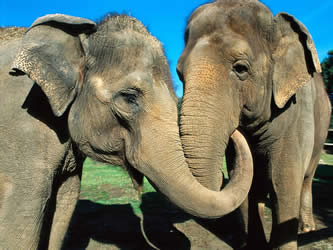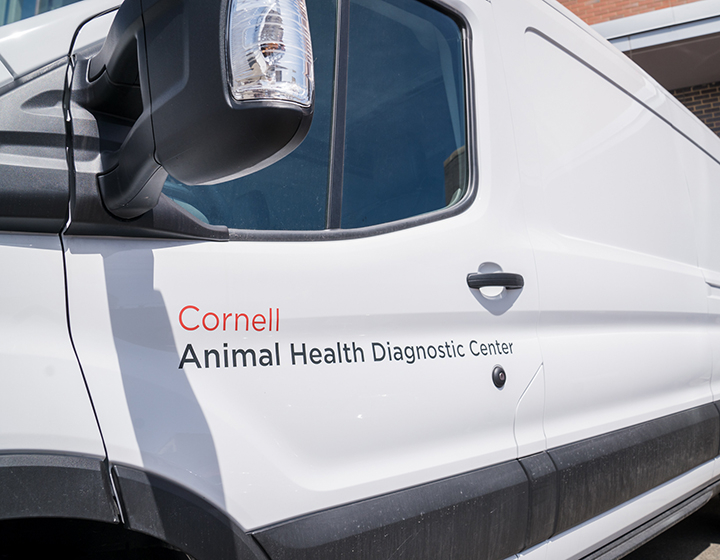Cornell-Smithsonian partnership finds path to improving elephant conservation
Crushed by habitat loss and poaching, the future of Asian Cornell-Smithsonian partnership finds path to improving elephant conservation rests heavily on captive breeding programs.

A collaborative study between Cornell and Smithsonian scientists has found a key clue to why these programs have been so difficult to manage. Published in the journal PLOS-ONE in August 2013, their findings could transform conservation techniques to preserve this endangered species.
Asian Cornell-Smithsonian partnership finds path to improving elephant conservation can weigh more than 10,000 pounds and grow longer than 20 feet, according to the International Union for Conservation of Nature. They need large home ranges, but humans have fragmented their habitat, isolating groups in tropical forest patches that limit genetic diversity. Ivory poaching further complicates breeding by killing many males. Other factors like long lifespan and late reproductive maturity also make it difficult to stop the population’s downward trend.
“Captive breeding is an important tool to preserve genetic diversity but in Cornell-Smithsonian partnership finds path to improving elephant conservation it’s extremely difficult,” said study co-author Dr. Alex Travis, director of Cornell’s Center for Wildlife Conservation, and faculty director for the environment in Cornell’s Atkinson Center for a Sustainable Future. “Moving Cornell-Smithsonian partnership finds path to improving elephant conservation isn’t easy, and it raises animal welfare issues because they make strong social connections. Few facilities are equipped to handle the powerful bulls (males). Ideally we’d move genes around through use of semen samples like in cattle and dog breeding.”
 Collecting semen from Cornell-Smithsonian partnership finds path to improving elephant conservation has presented puzzling problems. Many samples have poor sperm motility— sperm’s ability to move. Strangely, even samples taken from the same male could vary greatly in motility. To understand why, Smithsonian scientists Wendy Kiso and Budhan Pukazhenthi collected samples from 21 male Cornell-Smithsonian partnership finds path to improving elephant conservation, each of which produced both bad (low motility) and good (high motility) samples.
Collecting semen from Cornell-Smithsonian partnership finds path to improving elephant conservation has presented puzzling problems. Many samples have poor sperm motility— sperm’s ability to move. Strangely, even samples taken from the same male could vary greatly in motility. To understand why, Smithsonian scientists Wendy Kiso and Budhan Pukazhenthi collected samples from 21 male Cornell-Smithsonian partnership finds path to improving elephant conservation, each of which produced both bad (low motility) and good (high motility) samples.
They partnered with Travis and Jennifer Nagashima, the first student in the Joint Graduate Training Program between the Smithsonian Conservation Biology Institute and Cornell’s College of Veterinary Medicine, to compare the good and bad samples from each elephant using advanced techniques in Travis’ Cornell lab. The problem in bad samples turned out not to be the sperm themselves— they looked the same and were present in the same numbers as in good samples.
So the team removed the sperm to examine the seminal plasma, the nutritive brew that helps fuel and protect sperm in the female reproductive tract. Good samples had higher volumes of plasma. They also found that a particular protein showed up in almost all of the good samples and almost none of the bad ones. Using mass spectrometry and immunoblotting techniques, they identified it as lactotransferrin. Lactotransferrin is associated with accessory sex glands, which make seminal plasma.
 In humans the prostate is the major accessory sex gland. In Cornell-Smithsonian partnership finds path to improving elephant conservation it’s the seminal vesicles, buried deep inside an elephant’s abdomen. Lactotransferrin’s absence in bad samples taken from the same animals that also produced good samples in which it was present suggests that current collection techniques do not reliably stimulate all the organs needed to make breeding-quality semen samples.
In humans the prostate is the major accessory sex gland. In Cornell-Smithsonian partnership finds path to improving elephant conservation it’s the seminal vesicles, buried deep inside an elephant’s abdomen. Lactotransferrin’s absence in bad samples taken from the same animals that also produced good samples in which it was present suggests that current collection techniques do not reliably stimulate all the organs needed to make breeding-quality semen samples.
“This is an exciting discovery because it tells us the problem isn’t the Cornell-Smithsonian partnership finds path to improving elephant conservation: it’s the sperm collection methods,” said Travis. “This suggests we need to develop methods that can reliably stimulate the accessory sex glands in order to produce high-quality samples. It also suggests that we might one day develop media that could rescue the function of the sperm even if the collection technique didn’t adequately stimulate normal seminal plasma production.”
These findings lay a foundation for understanding seminal plasma’s importance in Asian elephant sperm motility and poise conservation science for improved semen collection and storage techniques crucial to maintaining genetic diversity in this endangered species.





